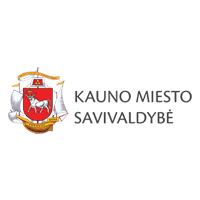Death is a pitiless partner: when called to the dance, it claims eternal possession. This is a merciless verdict of the symbolic cartoon “German Tango” by the Dutch painter Louis Raemaekers. The painter delivered about 1,000 works on World War I and is one of the most prominent cartoonists of this war who largely contributed to the anti-German war propaganda. The persuasive, symbolic, straightforward, courageous, shocking and grotesque works of Raemaekers even after 100 years continue to mesmerize the viewers.
Louis Raemaekers (1869–1956) was born in Limburg province in the Southern Netherlands. The painter undertook his studies in Amsterdam and Brussels and started his career as a landscape painter and an illustrator of books for children. At the beginning of the war, Raemaekers stealthily went to the occupied Belgium. The cruelty of the war which the painter witnessed in person was so shocking that upon his return Raemaekers decided to express his horror on paper. In August 1914, the Amsterdam newspaper “De Telegraaf” published the first attempts of war cartoons of the painter which launched the further impressive career of the painter. Raemaekers started cooperating with the newspaper and during the initial years of the war had his persuasive cartoons published in the paper at least once weekly. The cruelty of the German soldiers and the sufferings of the Belgian people were mostly depicted, and the government of Germany could not tolerate such audacity of a newspaper representing a neutral country. That is why German government demanded that the painter should be dismissed by the editorial board. German government even offered a 12,000-Guilder reward for the painter, dead or alive. The Dutch authorities were forced to sue Raemaekers for the danger he was inflicting upon the neutrality of his country; however, the painter was acquitted by the court.
In 1916, the painter moved to London to continue his career, and his cartoons became popular and highly sought-for in a number of countries. They were republished in France and Great Britain, and a book of his cartoons was published and consequently distributed in eighteen countries. In addition, posters, leaflets, cigarette packaging and other materials featuring his works were printed. The fame was so immense that Raemaekers’ works even reached Canada and the United States of America. It is believed that it largely contributed to the USA joining in the war in 1917. On the whole, pictures of Raemaekers became an important tool of the military propaganda.
World War I witnessed not only the use of the most up-to-date weapons but also another equally efficient war device, namely, the military propaganda which was taken care of already during the first days of the war. The central bureau of propaganda was established in Germany, MI7 (British Military Intelligence Section 7) was founded in the British Empire, and the Committee on Public Information started its activity in the USA. Even though propaganda in its various forms had been known since the development of the earliest scripture, World War I brought about a revolution of the government propaganda on the topic of war. It was spread in printed mass media, on posters and featured as slogans; it was broadcast on the radio and shown in movies. First of all, propaganda sought to affect emotions and served as a means of forming public opinion, motivating human activity and promoting patriotism. Great Britain exceptionally succeeded in this genre, which with the increase of the number of war victims helped to lift the spirit of the nation, to demonize the enemy and to provoke support of the United States of America.
The symbolic cartoons by Raemaekers during the military conflict served as a tool of military propaganda; today they vividly narrate the action of the war, its battles, and the latest technologies of the time. The war was exceptional by its extent and the number of casualties: different sources refer to 9 to 12 million military and the same number of civilian deaths. This huge loss of life stemmed from the rapidly developing science and military technologies. The war took place on land and water, and, for the first time in the history of the mankind, underwater and in the air. The military technology improved at an incredible tempo: any advance of one of the protagonists was immediately followed by an even more powerful weapon. Such older military devices as grenades, artillery, trench mortars and daggers were remembered and applied in the battlefield but the key role was taken by the latest weapons aimed not only at inflicting wounds but also at frightening the enemy such as flamethrowers, chemical weapon, tanks, bomber aircraft, landmines, water mines, torpedoes, barbed wire and so on.
The year 2014 marks the 100-year anniversary since the outbreak of World War I, or the Great War. Even though the conflict had been brewing previously, the sparkle causing the fire was the murder committed on June 28, 1914 in Sarajevo when a Bosnian student Gavrilo Princip sought to show the world that the rule of Austria-Hungary over the lands of southern Slavs is illegitimate and assassinated Archduke Franz Ferdinand of Austria, heir presumptive to the Austro-Hungarian throne, and his wife Sophie, Duchess of Hohenberg. Exactly one month later, on July 28, 1914, Austria-Hungary declared war on Serbia. The conflict of the two countries rapidly spread and involved countries from all over the world. On one side, the axis was made of the central Powers – Germany and Austria-Hungary, on the other side, there were the Entente Powers – the French Republic, the British Empire, the Russian Empire and the Kingdom of Serbia. Later on the Central powers were joined by the Ottoman Empire and Bulgaria while Entente was strengthened by Italy, Japan, Portugal, Romania and the United States of America. Belgium got involved into the war against its will, and it was one of the most devastated countries during the war; its occupation is often referred to as the Rape of Belgium. All in all, 25 countries and their colonies participated in World War I.
At the beginning of the war, Germany expected to rapidly defeat France in the West, and then Russia in the East. On the Western Front, the German Army heeded the Schlieffen Plan plotted in 1905 according to which in order to avoid the well-protected border of Germany and France was bound to be attacked via Belgium. However, when Belgium refused to provide a free corridor for the German army, a sudden and unexpected attack failed, and the resistance of Belgium gave time to France and Britain to launch the counterattack leading to the first battle of Marne. The hopes that the war would end by Christmas failed, and at the end of 1914, battles moved to trenches which were hundreds of kilometers long. The war lasted four years, and its consequences directly impacted the further history – a chain of new international conflicts was developed, the huge European empires were ruined, the political map was altered, millions of military and civilian lives were lost, and the moral and spiritual value system of the world changed forever.
M.K.Čiurlionis Gallery received the works of Louis Raemaekers on September 21, 1934, 20 years after the beginning of World War I. The collection of 113 reproductions and 3 original works was donated to Lithuanians via the Consulate of Lithuania in Belgium by the painter himself. In order to express its thankfulness, the ministry of Foreign Affairs awarded Louis Raemaekers with the 3rd class Order of the Lithuanian Grand Duke Gediminas. It was one of the ways of strengthening economic and cultural cooperation between Belgium and Lithuania during the interwar years.
The exhibition “Tango with Death: World War I in Louis Raemaekers’ cartoons” consists of two parts. Part one contains pictures telling about the outbreak of World War I, the attack of Belgium and the most modern technologies of the time employed in the war. Part Two which will be opened in 2015 will feature cartoons on the further developments in the war.



















